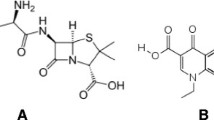Objectives. To assess changes in the phospholipid composition of blood plasma in patients with chronic cerebrovascular disease using the neuroprotectors 2-ethyl-6-methyl-3-hydroxypyridine succinate (Neurox) and citocoline (Neipilept), which are natural metabolites and participants in metabolic processes in the body, alone and in combination. Materials and methods. A total of 40 patients (18 men, 22 women) aged 54–72 years took part in the study; patients had chronic cerebrovascular disease in exacerbation on the background of hypertensive crisis and/or impairments to cardiac rhythm. Results. Extraction of lipids from patients’ blood cells revealed significant reductions in the quantities of all (total) lipids after completion of treatment in patients receiving Neurox, Neipilept, and complex treatment using both agents. Studies of the quantitative composition of blood cell phospholipids showed that there were no significant changes in patients taking Neurox, while citicoline, alone and in combination with 2-ethyl-6-methyl-3-hydroxypyridine succinate, led to increases in total quantities. Assessment of the qualitative composition of classes of phospholipids in plasma showed no significant changes in patients taking Neurox, while those receiving Neipilept alone and with 2-ethyl-6-methyl-3-hydroxypyridine succinate showed significant increases in plasma phosphatidylcholine. There were no significant changes in phosphatidylinositol, phosphatidylserine, or sphingomyelin contents.
Similar content being viewed by others
References
M. A. Moskowitz, E. H. Lo, and C. Iadecola, “The science of stroke: mechanisms in search of treatments,” Neuron, 67, 181–198 (2010).
P. Lipton, “Ischemic cell death in brain neurons,” Physiol. Rev., 79, 1431–1568 (1999).
M. A. Moskowitz, E. H. Lo, and C. Iadecola, “The science of stroke: mechanisms in search of treatments,” Neuron, 67, 181–198 (2010), https://doi.org/10.1016/j.neuron.2010.08.019.
K. E. Wellen, C. Lu, A. Mancuso, et al., “The hexosamine biosynthetic pathway couples growth factor-induced glutamine uptake to glucose metabolism,” Genes Dev., 24. No. 24, 2784–2799 (2010), https://doi.org/10.1101/gad.1985910.
R. Bell, D. Burns, T. Okazaki, and Y. Hannun, “Neurobiology of essential fatty adds. Network of signal transduction pathways involving lipids: protein kinase c-dependent and -independent pathways,” Adv. Exp. Med. Biol., 318, 275–282 (1992).
N. Andrieu-Abadie, V. Gouaze, R. Salvayre, and T. Levade, “Ceramide in apoptosis signalling: relationship with oxidative stress,” Free Radic. Biol. Med., 31, No. 6, 717–728 (2001).
N. Andrieu-Abadie and T. Levade, “Sphingomyelin hydrolysis during apoptosis,” Biochim. Biophys. Acta, 1585, No. 2–3), 126–134 (2002).
W. Droge, “Free radicals in the physiological control of cell function,” Physiol. Rev., 82, No. l, 47–95 (2002).
G. J. Ter Horst and J. Korf (eds), Clinical Pharmacology of Cerebral Ischemia, Humana Press, Totowa, NJ (1997).
R. M. Adibhatla and J. F. Hatcher, “Cytidine 5’-diphosphocholine (CDP-choline) in stroke and other CNS disorders,” Neurochem. Res., 30, No. 1, 15–23 (2005).
J. W. Phillis and M. H. O’Regan, “The role of phospholipases, cyclooxygenases, and lipoxygenases in cerebral ischemic/traumatic injuries,” Crit. Rev. Neurobiol., 15, No. 1, 61–90 (2003).
A. M. Rao, J. F. Hatcher, M. S. Kindy, and R. J. Dempsey, “Arachidonic acid and leukotriene C4: role in transient cerebral ischemia of gerbils,” Neurochem. Res., 24. No. 10, 1225–1232 (1999).
P. Sahota and S. I. Savitz, “Investigational therapies for ischemic stroke: neuroprotection and neurorecovery,” Neurotherapeutics, 8, No. 3, 434–451 (2011), https://doi.org/10.1007/s13311-011-0040-6.
J. L. Saver, “Target brain: neuroprotection and neurorestoration in ischemic stroke,” Rev. Neurol. Dis., 7, No. 1, 14–21 (2010).
E. Yu. Soloveva, A. N. Karneev, A. V. Chekanov, et al., “The complex use of vinpocetin and 2-ethyl-6-methyl-3-hydroxypyridine succinate in cerebrovascular pathology,” Zh. Nevrol. Psikhiatr., 117, No. 5, 103–108 (2017), https://doi.org/10.17116/jnevro201711751103-108.
G. R. Bartlett, “Phosphorus assay in column chromatography,” J. Biol. Chem., 234, No. 3, 466–468 (1959).
V. I. Svetashev and V. E. Vaskovsky, “A simplifi ed technique for thin-layer microchromatography on lipids,” J. Cromatogr., 67, No. 2, 376–378 (1972).
V. E. Vaskovsky and E. Y. Kostetsky, “Modifi ed spray for the detection of phospholipids on thin-layer chromatograms,” J. Lipid Res., 9, 396 (1968).
T. Brodniewicz-Proba, “Human plasma fractionation and the impact of new technologies on the use and quality of plasma-derived products,” Blood Rev., 5, 245–257 (1991), https://doi.org/10.1016/0268-960X(91)90016-6.
O. Yu. Rebrova, Statistical Analysis of Medical Data, Media Sfera, Moscow (2006).
M. V. Bilenko, Ischemic and Reperfusional Damage to Organs, Meditsina, Moscow (1989).
J. T. Coyle and P. Puttfarcken, “Oxidative stress, glutamate, and neurodegenerative disorders,” Science, 262, 689–695 (1993), https://doi.org/10.1126/Science.7901908.
Y. Huang, Q. He, and L. Zhan, “The effects of CDP-Choline on the improvement of the successful rate of cardiopulmonary resuscitation and post-resuscitation cardiac function,” Zhonghua Wei Zhong Bing Ji Jiu Yi Xue, 25, No. 2, 80–83 (2013), https://doi.org/10.3760/cma.j.issn.2095-4352.2013.02.007.
G. Paragh, E. Kovacs, I. Seres, et al., “Altered signal pathway in granulocytes from patients with hypercholesterolemia,” J. Lipid Res., 40, 1728–1733 (1999).
P. J. Thompson, N. L. A. Misso, M. Passarelli, and M. S. Phillips, “The effect of eicosapentaenoic acid consumption on human neutrophil chemiluminescence,” Lipids, 26, 1223–1226 (1991).
S. Labrouche, G. Freyburger, H. Gin, et al., “Changes in phospholipid composition of blood cell membranes (erythrocyte, platelet, and polymorphonuclear) in different types of diabetes – clinical and biological correlations,” Metabolism, 45, No. 1, 57–71 (1996).
Y. Y. Zhao, H. Miao, X. L. Cheng, and F. Wei, “Lipidomics: Novel insight into the biochemical mechanism of lipid metabolism and dysregulation-associated disease,” Chem. Biol. Interact., 240, 220–38 (2015), https://doi.org/10.1016/j.cbi.2015.09.005.
Author information
Authors and Affiliations
Corresponding author
Additional information
Translated from Zhurnal Nevrologii i Psikhiatrii imeni S. S. Korsakova, Vol. 118, No. 1, Iss. 1, pp. 18–22, January, 2018.
Rights and permissions
About this article
Cite this article
Solovyeva, E.Y., Karneev, A.N., Chekanov, A.V. et al. Studies of the Membrane-Protecting Potential of the Combination of 2-Ethyl-6-Methyl-Hydroxypyridine Succinate and Citicoline. Neurosci Behav Physi 49, 738–742 (2019). https://doi.org/10.1007/s11055-019-00794-0
Published:
Issue Date:
DOI: https://doi.org/10.1007/s11055-019-00794-0




